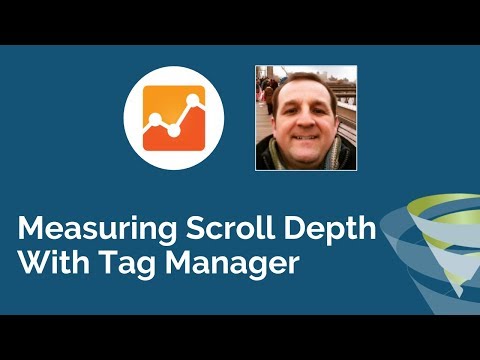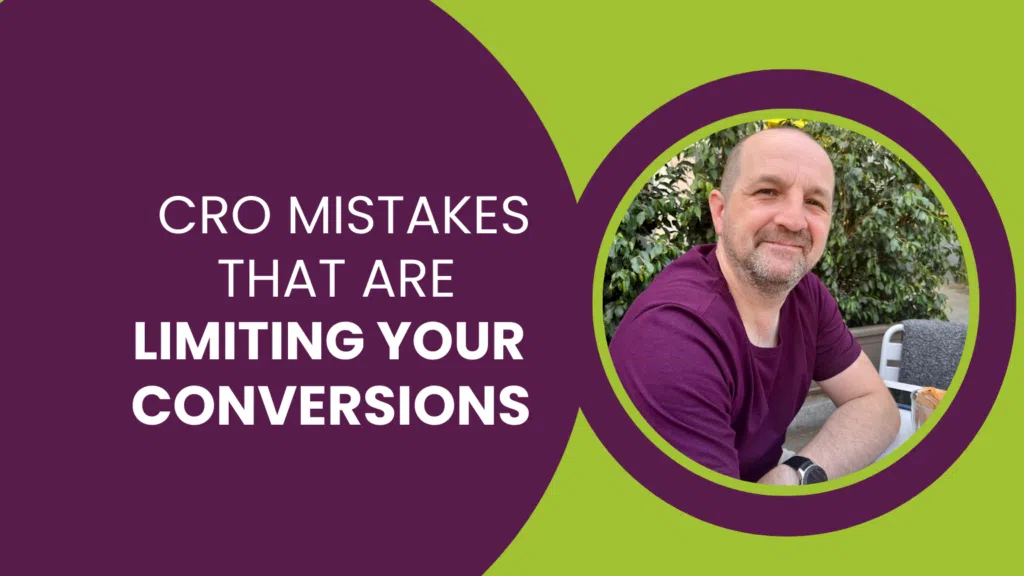The latest instalment of our T-Time web series looks at how to measure scroll depth in Google Analytics using Google Tag Manager – it sounds very complex, but in the video below, Tillison Consulting MD Mark Tillison breaks it down step-by-step into a surprisingly simple process.

In this Google Analytics T-Time show:
- What is scroll depth?
- Why should you measure scroll depth?
- What scroll depth event data looks like in Google Analytics
- How to configure Google Tag Manager to measure scroll depth
What is scroll depth?
(00:37) Let’s say that a user lands on or navigates to a page on your website, such as a blog post. If they start scrolling down the blog post but, after reading the intro, realise that it will be of little use or interest to them and leaves your site, this is called a ‘bounce’. However, if a different user scrolls further down the page and reads the whole blog post before leaving, this is also called a ‘bounce’.
Obviously, the visit from the latter user who read more of the content is more valuable than that of the user who bounced in a matter of seconds. Bounces are of varying value, and scroll depth in Google Analytics helps you to measure the value of different behavioural patterns on your site.
Viewing scroll depth in Google Analytics
(01:55) Now you know that not all bounces are of equal value and that scroll depth gives you the opportunity to measure that, how can you look at scroll depth in Google Analytics?
As is the case with tracking other user interactions in Analytics, in order to track scroll depth you need to set up a Google Analytics event. You can pick any percentage of scroll depth you wish – in the video, Mark has configured events to ‘fire’ every time a user scrolls 50% of the way down the page, then 75% and then 90%.
Once you have configured your events, you can run reports that can show you a variety of statistics, such as:
- Whether the scroll depths are being met more or less frequently
- Performance improvements for individual blog posts or pages
- Compared levels of engagement from different traffic sources (i.e. Facebook, Twitter, organic search)
You can test your scroll depth events by looking at your chosen page in Google Tag Manager preview and as you scroll down, the tags that are firing will appear as events in the Tag Manager preview.
Configuring scroll depth in Google Tag Manager
(04:42) To configure scroll depth in Google Tag Manager – assuming you have already added your Google Analytics variable – you need to start by adding the variable for Scroll Depth Threshold, which can be found in the Scrolling section of the Built-In Variables menu. Once you have enabled the Scroll Depth Threshold variable, you need to create a new trigger (don’t forget to give it an appropriate title). When choosing the trigger type, select Scroll Depth.
From there you can set the scroll depths on which events will fire – you’ll probably want to set vertical scroll depths as opposed to horizontal, as users typically scroll up and down your page as opposed to side-to-side, unless your website is laid out in such a way. You also have the option to fire the event on all pages or just a selection of them.
After you’ve saved your scroll depth event triggers, you need to set up your Google Analytics tags. In most situations, you should set the tag type to Universal Analytics, and then your track type for this should be set to Event. From here, you need to set your Event Tracking Parameters, make sure the tag is set up under your Analytics ID’s settings, and add the Scroll Depth trigger you configured earlier.
All you need to do after that is run a preview of the page through Google Tag Manager – if the Scroll Depth Event is firing at the appropriate times, then you’re good to go.
If you found this episode of T-Time useful, subscribe to our YouTube channel for more tips and advice on how to improve your business using Google Analytics and other online channels.
Do you have any further questions about scroll depth in Google Analytics? Let us know in the comments, or click below to speak with one of our specialists and find out more about our Google Analytics training courses.







